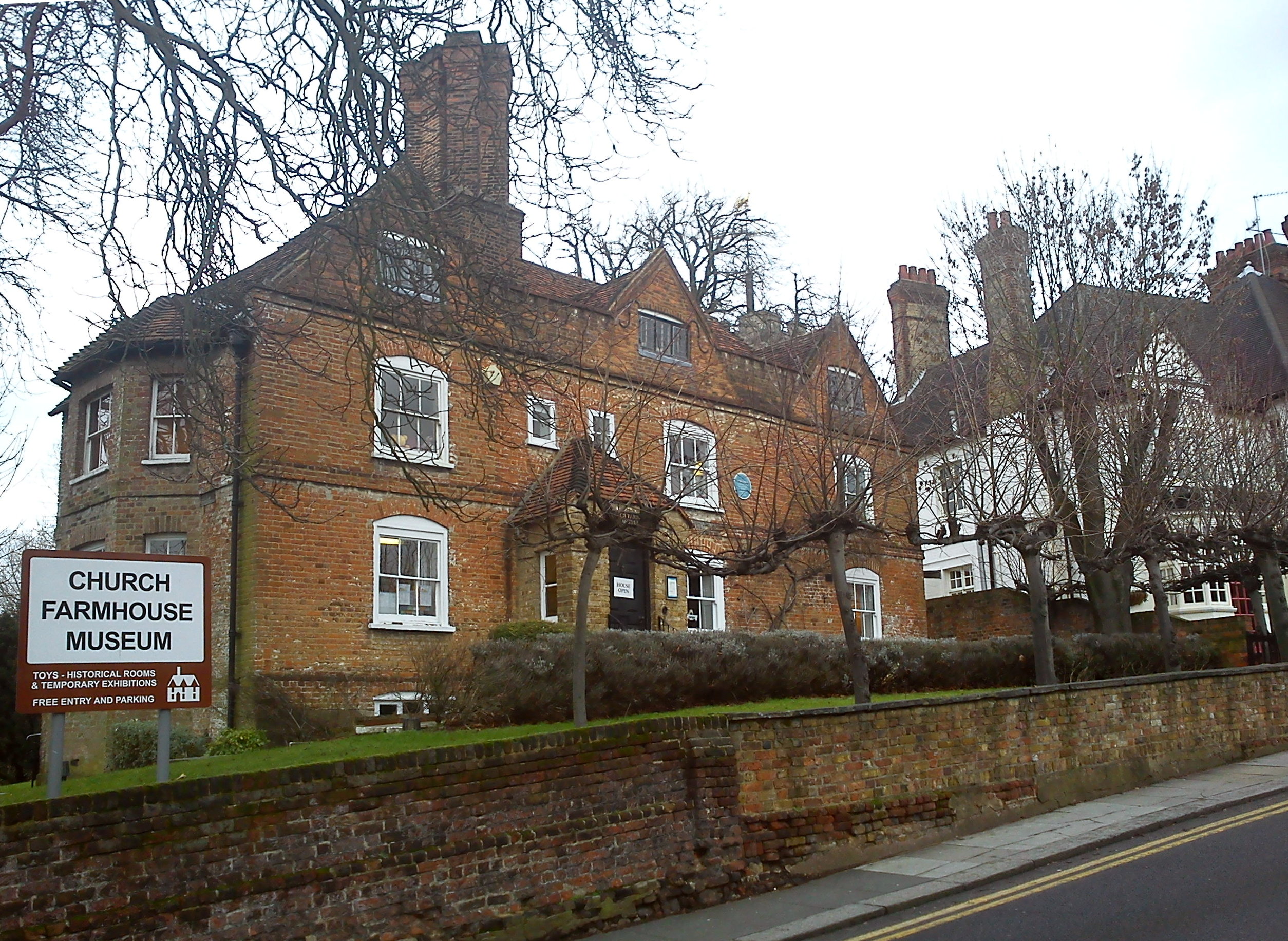Church Farmhouse Museum on:
[Wikipedia]
[Google]
[Amazon]
 Church Farmhouse Museum was in a Grade II* listed 17th-century farmhouse in Hendon, north London, in the
Church Farmhouse Museum was in a Grade II* listed 17th-century farmhouse in Hendon, north London, in the
Church Farmhouse Museum
Church Farmhouse Museum closes: short film
{{Coord, 51.5913, -0.2282, display=title Museums established in 1954 Museums disestablished in 2011 Defunct museums in London Museums in the London Borough of Barnet Houses in the London Borough of Barnet Hendon 17th-century architecture in the United Kingdom Grade II* listed buildings in the London Borough of Barnet
 Church Farmhouse Museum was in a Grade II* listed 17th-century farmhouse in Hendon, north London, in the
Church Farmhouse Museum was in a Grade II* listed 17th-century farmhouse in Hendon, north London, in the London Borough of Barnet
The London Borough of Barnet () is a suburban London borough in North London. The borough was formed in 1965 from parts of the ceremonial counties of Middlesex and Hertfordshire. It forms part of Outer London and is the largest London borough ...
– the oldest surviving dwelling in Hendon.
The museum had two period rooms, a period kitchen and scullery, two exhibition spaces and a large garden with a pond. The building is a two-storey, red brick farmhouse with three gables and centrally placed chimney stacks. It is typical of 17th-century Middlesex
Middlesex (; abbreviation: Middx) is a historic county in southeast England. Its area is almost entirely within the wider urbanised area of London and mostly within the ceremonial county of Greater London, with small sections in neighbour ...
vernacular architecture
Vernacular architecture is building done outside any academic tradition, and without professional guidance. This category encompasses a wide range and variety of building types, with differing methods of construction, from around the world, bo ...
. A blue plaque commemorates Mark Lemon
Mark Lemon (30 November 1809, in London – 23 May 1870, in Crawley) was the founding editor of both ''Punch'' and '' The Field''. He was also a writer of plays and verses.
Biography
Lemon was born in Marylebone, Westminster, Middlesex, ...
, who lived in the house as a child between 1817 and 1823. His book ''Tom Moody’s Tales'' includes recollections of his childhood in the area. The house was owned by the Kempe family between 1688 and 1780, and later by the Dunlop family from 1869-1945.
Barnet Council, in an attempt to save money and despite local opposition, voted to withdraw funding from Church Farmhouse Museum, as well as Barnet Museum, from April 2011. The Council's cabinet met on Monday 13 December 2010 and approved the budget for 2010/2011 which included this proposal. There was a brief period of public consultation up to 17 January 2011, resulting in two petitions submitted against the closure, one signed by an estimated 1,900 people and one by an estimated 1,000 people. followed by a final recommendation by the cabinet in February, as a result of which the museum closed, for the time being, on 31 March 2011. The final temporary exhibition, "Harry Beck
Henry Charles Beck (4 June 190218 September 1974) was an English technical draughtsman who created the present London Underground Tube map in 1931. Beck drew the diagram after being fired at the London Metro Signal Office. Although his design ...
and the London Tube Map", closed on 27 March 2011.
Part of the museum collection went to Barnet Museum and part was sold at auction.
The building is now occupied by the Centre for Abuse and Trauma Studies and the European Human Rights Advocacy Centre, both part of Middlesex University. The University took over and restored the building in 2016.
References
External links
Church Farmhouse Museum
Church Farmhouse Museum closes: short film
{{Coord, 51.5913, -0.2282, display=title Museums established in 1954 Museums disestablished in 2011 Defunct museums in London Museums in the London Borough of Barnet Houses in the London Borough of Barnet Hendon 17th-century architecture in the United Kingdom Grade II* listed buildings in the London Borough of Barnet